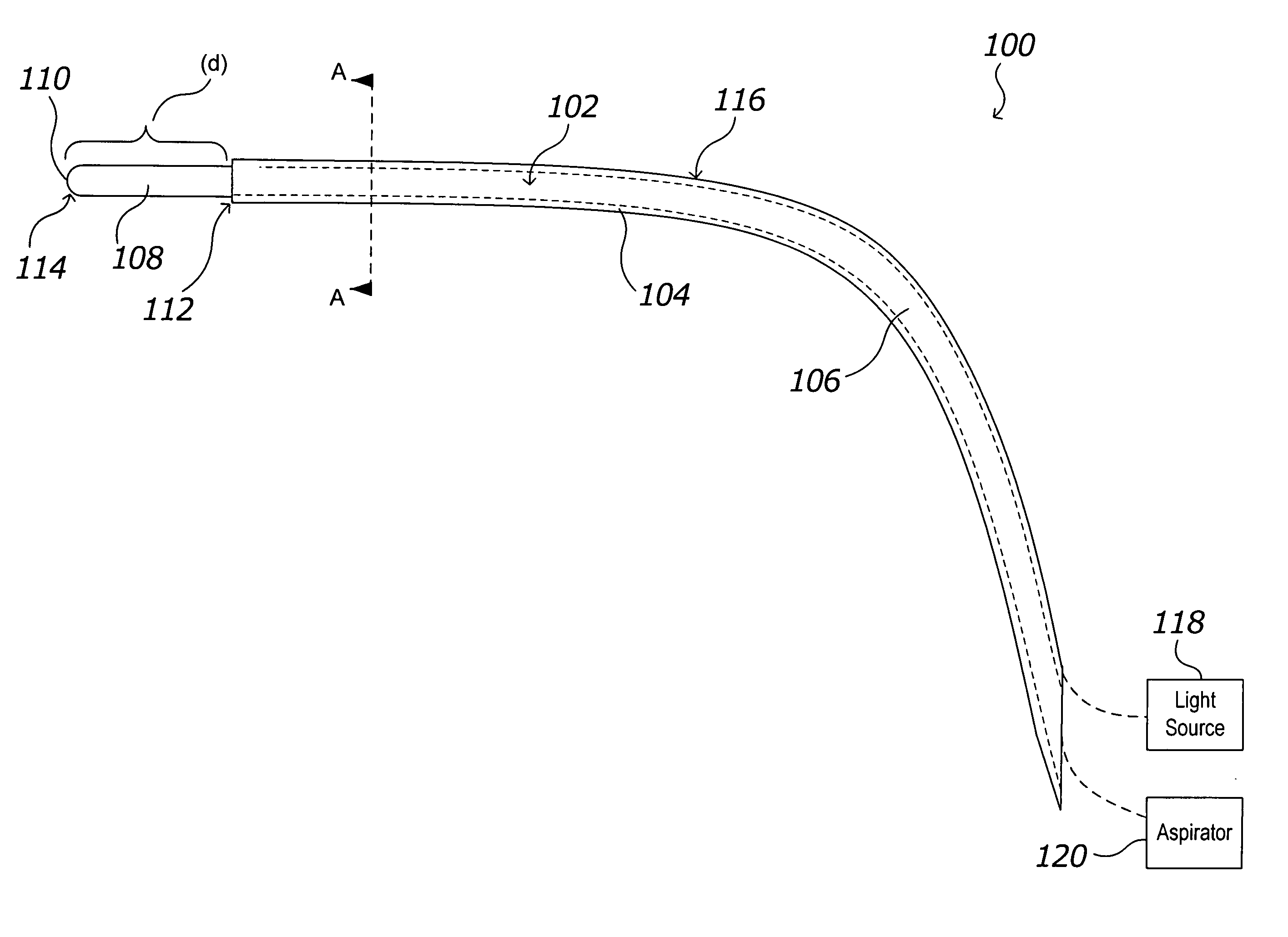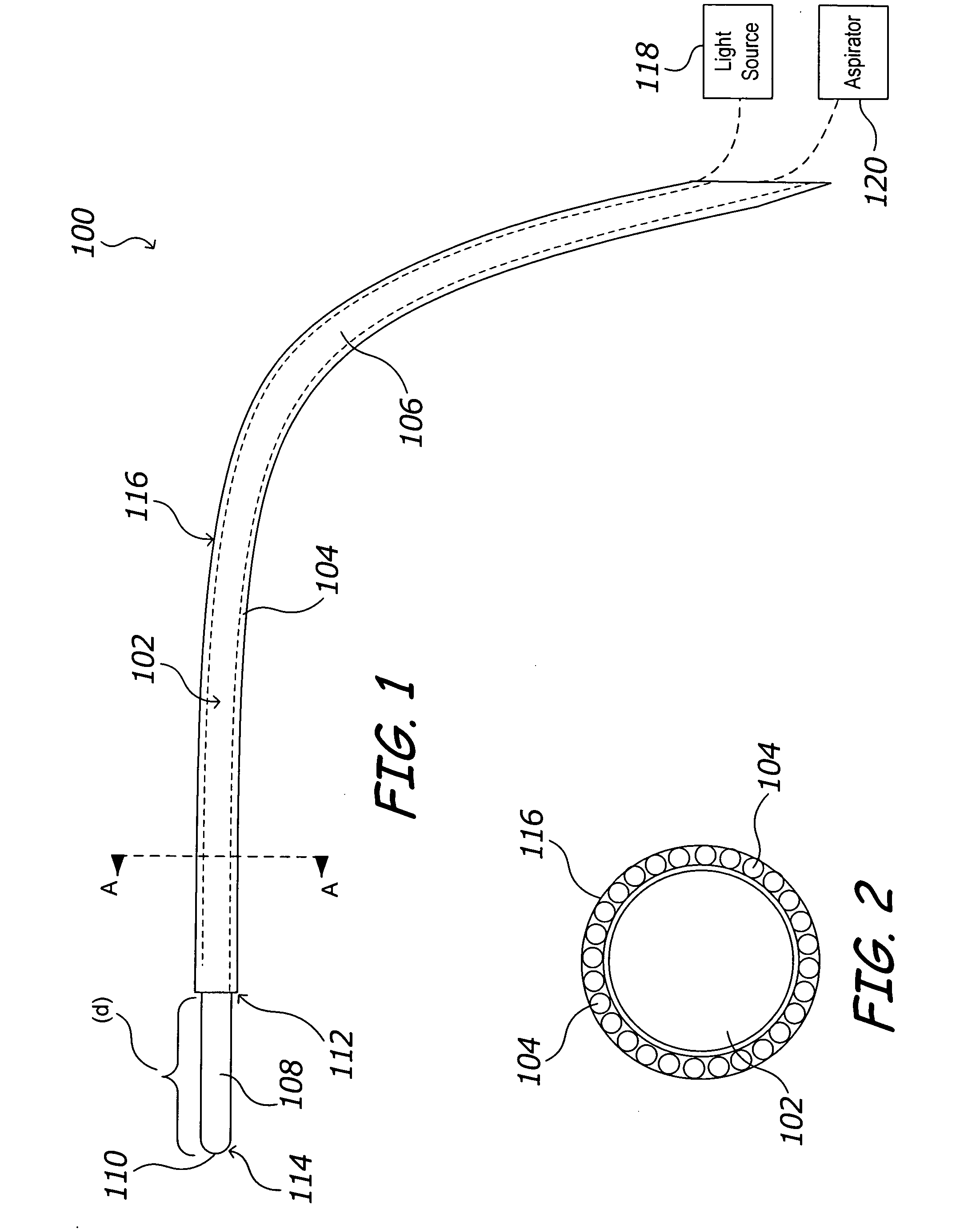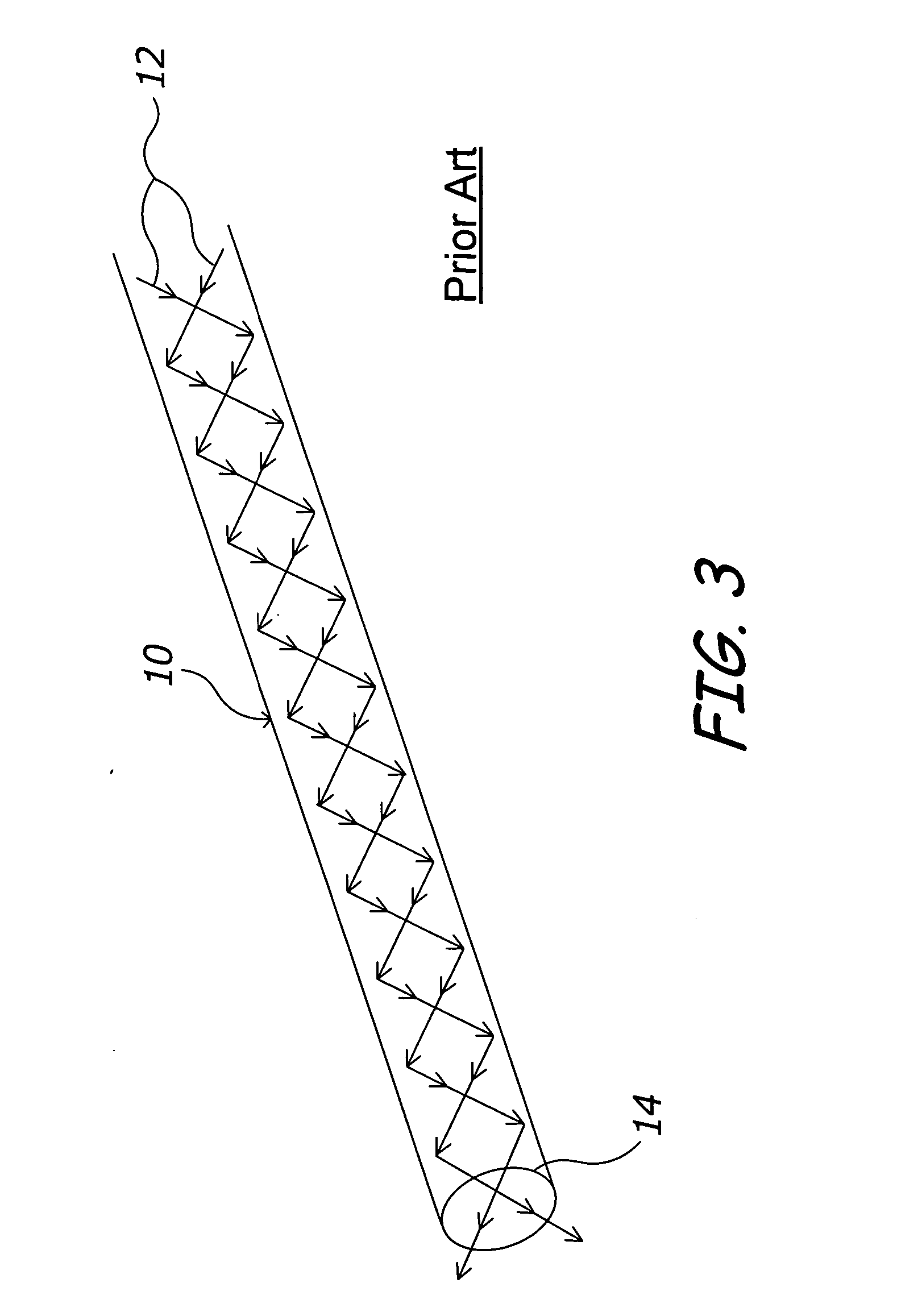Surgical instrument with integral optical system
a surgical instrument and optical system technology, applied in the field of surgical instruments, can solve the problems of severe constraints on the space available for the placement of surgical instruments, the reduction of the incision size to the incision depth ratio, and the limited visualization of the surgical area, so as to achieve the effect of reducing shadowing and visual obstruction
- Summary
- Abstract
- Description
- Claims
- Application Information
AI Technical Summary
Benefits of technology
Problems solved by technology
Method used
Image
Examples
Embodiment Construction
[0038] Referring now to the drawings, wherein like reference numerals designate corresponding structure throughout the views.
[0039]FIG. 1 depicts aspiration and illumination device 100 according to one advantageous aspect of the present invention. Aspiration and illumination device 100 generally comprises aspiration conduit 102 and optical fibers 104. As illustrated in FIG. 2 along section line AA, optical fibers 104 are positioned circumferentially about aspiration conduit 102.
[0040] Aspiration conduit 102, in one advantageous embodiment, preferably comprises a non-metallic substance such as, for example, a flexible plastic material. It is further contemplated that aspiration conduit 102 may be provided of a material that can hold a shape when deformed providing increased control for the surgeon.
[0041] As can be seen in FIG. 1, aspiration conduit 102 comprises a body portion 106 and a tip 108, the tip 108 provided with a distal end 110. In one advantageous embodiment, tip 108 is...
PUM
 Login to View More
Login to View More Abstract
Description
Claims
Application Information
 Login to View More
Login to View More - R&D
- Intellectual Property
- Life Sciences
- Materials
- Tech Scout
- Unparalleled Data Quality
- Higher Quality Content
- 60% Fewer Hallucinations
Browse by: Latest US Patents, China's latest patents, Technical Efficacy Thesaurus, Application Domain, Technology Topic, Popular Technical Reports.
© 2025 PatSnap. All rights reserved.Legal|Privacy policy|Modern Slavery Act Transparency Statement|Sitemap|About US| Contact US: help@patsnap.com



